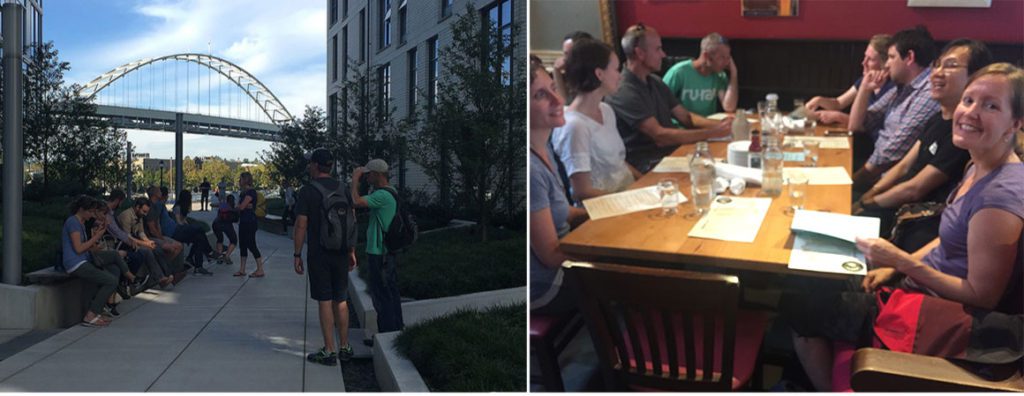Portland Field Trip 2016
Each year we take a fieldtrip as an office to experience the landscape architecture in different places and garner inspiration for our own design work. This year’s trip took us to Portland, Oregon.
From the airport, we took the MAX to Skidmore Fountain in the heart of Portland’s old town. The fountain, built in 1888, served as one of the city’s most prominent landmarks through the early part of the 20th century. It is also conveniently located adjacent to Voodoo Donuts, where many of us stopped for donuts and coffee.
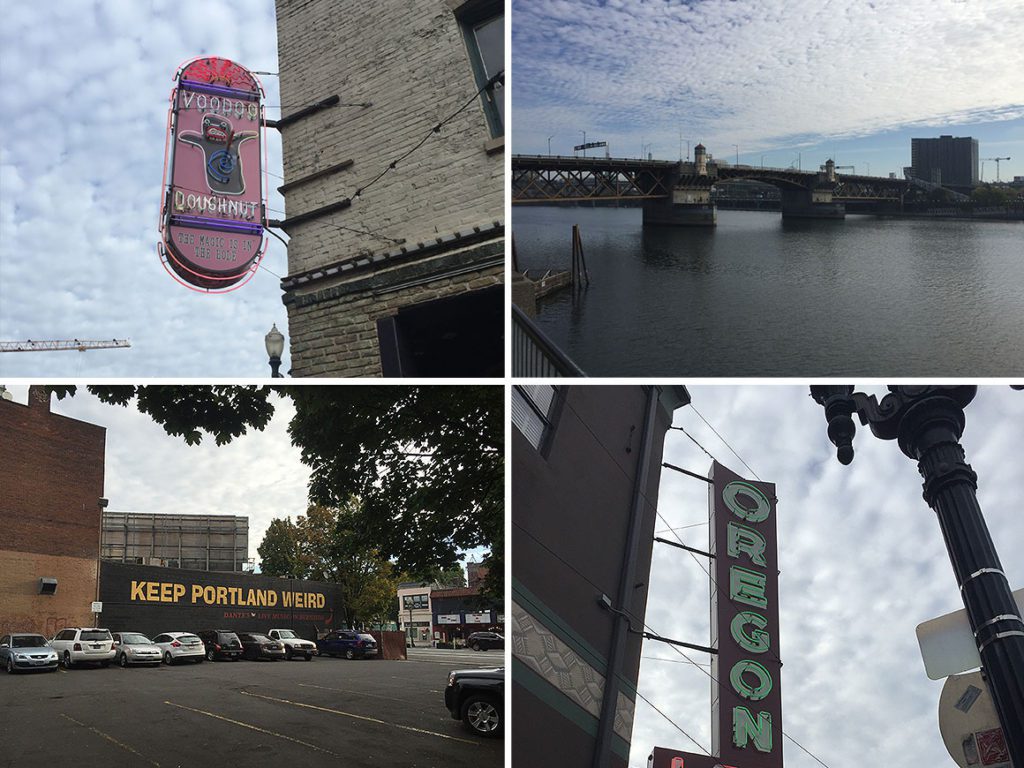
Across the street from Skidmore Fountain, we explored Tom McCall Waterfront Park, the site of Portland’s well-known Saturday Market. On a weekday morning, it was sparsely populated save for bicyclists and joggers.
The park is one of Portland’s most iconic places. A beautiful, open green space and promenade that connects Portland to the river, it replaced a freeway in the 1970s as one of the first examples of freeway removal in the US.
Entering the park, we paused at Ankeny Plaza and walked among the thought-provoking stones of the Japanese American Historical Plaza. Etched with poems and messages, the stones tell the stories of citizens of Japanese descent interned during WWII.
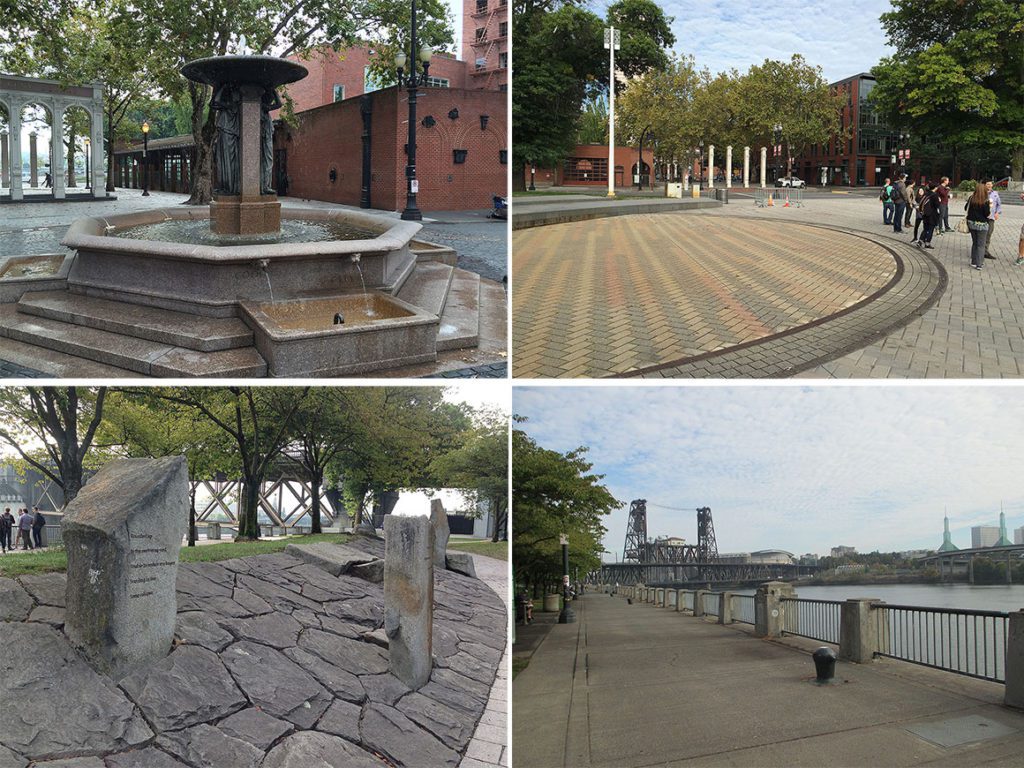
The next stop was the Edith Wendell Wyatt Federal Building, a LEED-platinum building with a solar roof, 165,000-gallon cistern, and exterior facades designed to minimize heat gain. The building’s base is a cornucopia of greenery with vines climbing a metal trellis system. The walls and bollards around the federal building’s perimeter blend into a lush garden of planting.
Nearby, we admired the impressive waterfalls of Keller Fountain. This iconic Portland fountain opened in 1970 across from Keller Auditorium. From inside the auditorium, the fountain’s waterfalls surrounded by trees become a beautiful borrowed view. Even early on a Friday morning, two photographers were already there with tripods snapping pictures.
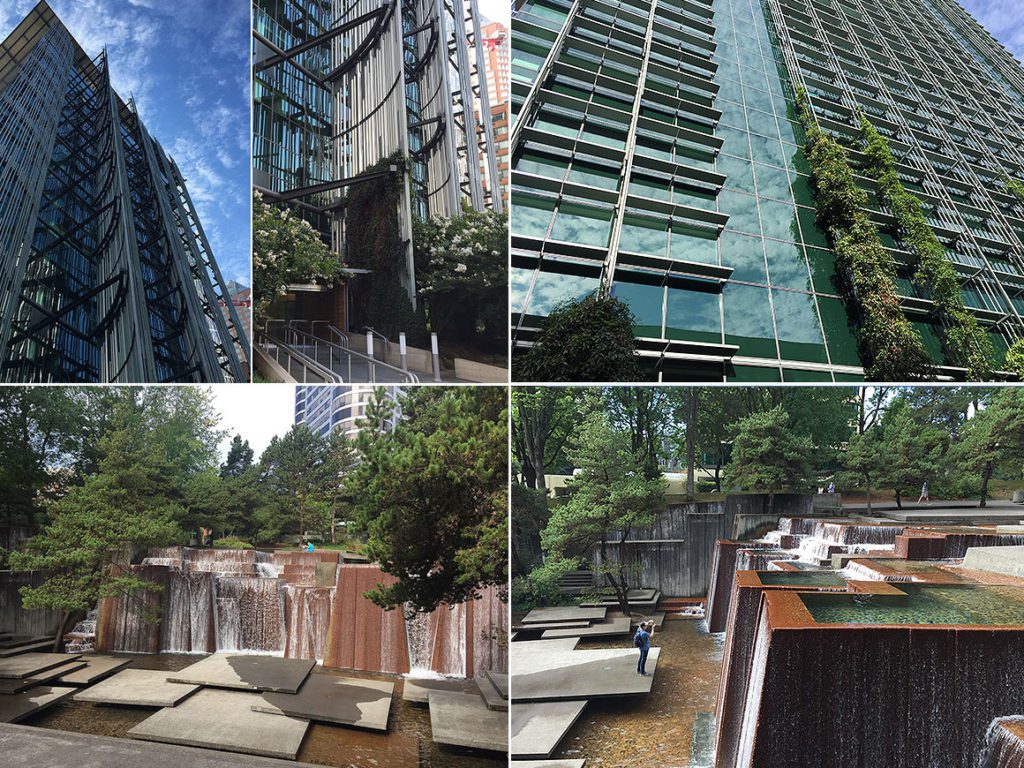
Keller Fountain is part of a sequence of outdoor spaces designed in the 1960s and 1970s by Lawrence Halprin & Associates to reflect a journey and celebration of Oregon’s geography. The Source Fountain and Lovejoy Park’s Fountain represent spring-water and glacial runoff flowing from the Cascade Mountains. Pettygrove Park with its earthen berms are the foothills, while Keller Fountain showcases the rushing flow of water from the foothills to the Columbia River.
Most of us had been to Portland before, but had never visited Lovejoy or Pettygrove Parks, located along a peaceful pedestrian path. Pettygrove Park was hosting a class of preschoolers as well as a tour group on segways. Known for its earthen berms and the beautiful bronze art piece called The Dreamer, the park offers a peaceful respite from city life.
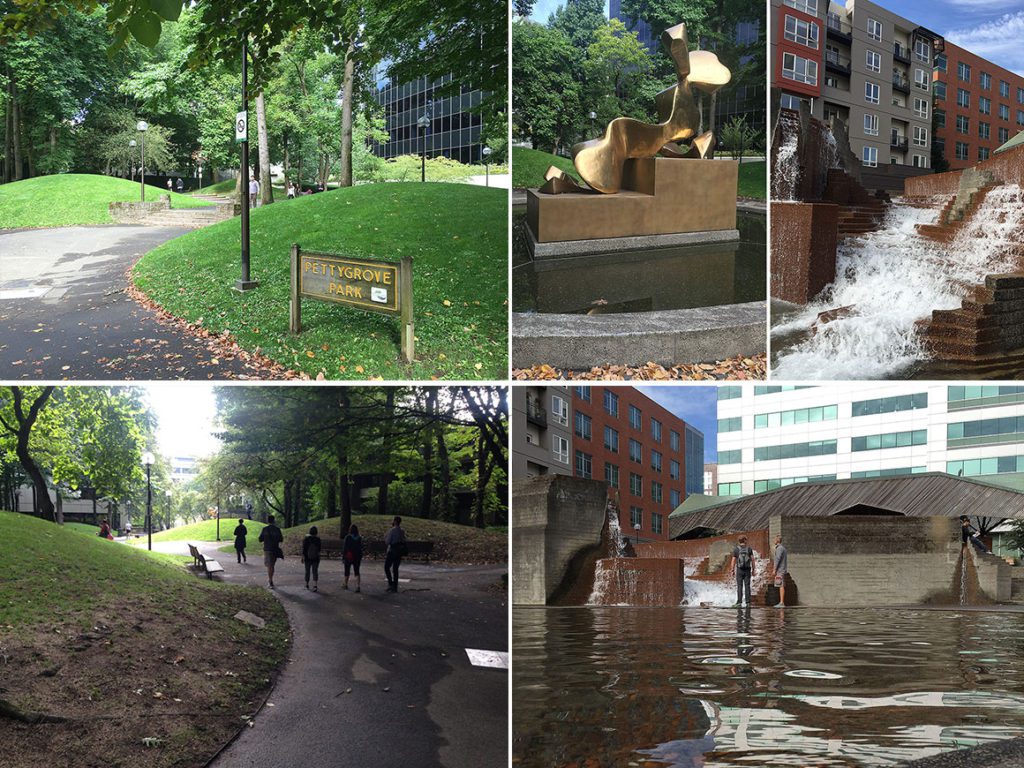
At Lovejoy Park, we admired the fast-flowing fountain. The water flows through a crevasse, which brings to mind a white-water mountain stream, and opens into a wide shallow basin crossed by stepping-stones. Above the fountain stands a distinctive geometric timber shelter, designed by Charles Moore and William Turnbull, Jr.
Hopping on the streetcar, we rode to Tilikum Crossing—a pedestrian and light-rail bridge that opened in 2015. We disembarked on the Willamette River’s east side and journeyed underneath the bridge to see the Sonic Dish—an interactive art piece that amplifies sound.
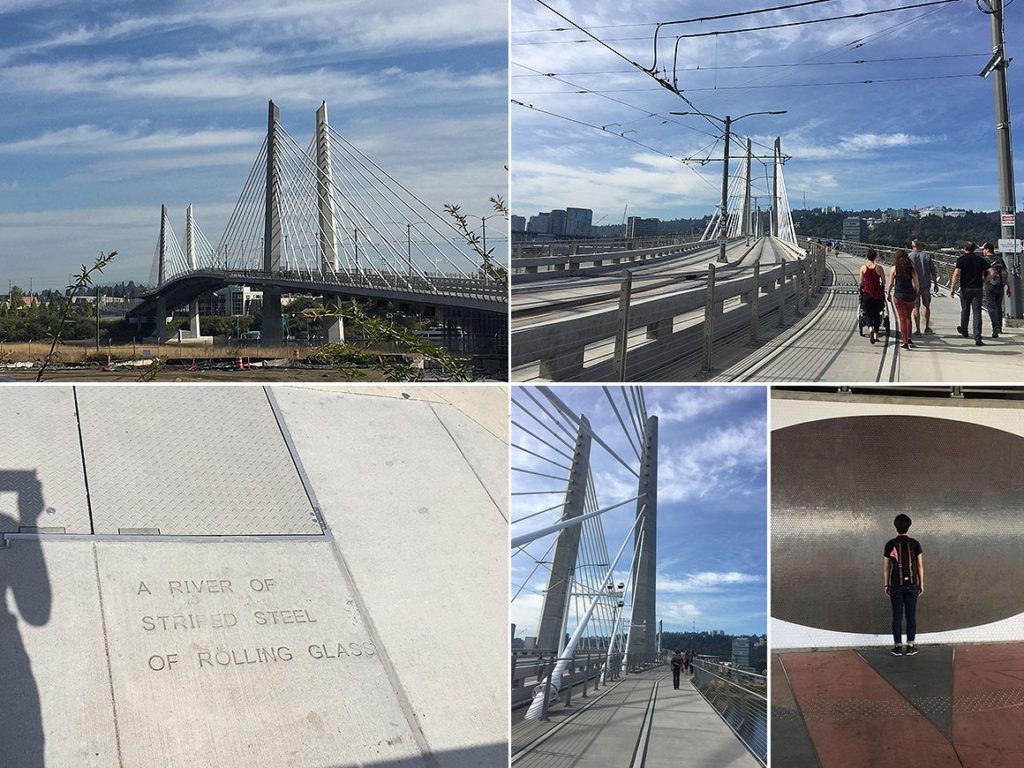
Returning to the river’s west side, we walked through the South Waterfront neighborhood to Elizabeth Caruthers Park, designed by Hargreaves Associates and Lango Hansen Landscape Architects. The park, opened in 2010, features an interactive fountain, wide lawn, and art that symbolizes the site of Portland’s first cabin. Boardwalks meander through a rain garden providing a close-up view of native plants.
Next stop was the South Waterfront Greenway, which overlooks the river and contains a variety of seating and artwork, as well as a path to a rocky beach. The art piece Cradle to Cradle by Buster Simpson explores the relationship of human intervention on the Willamette River.
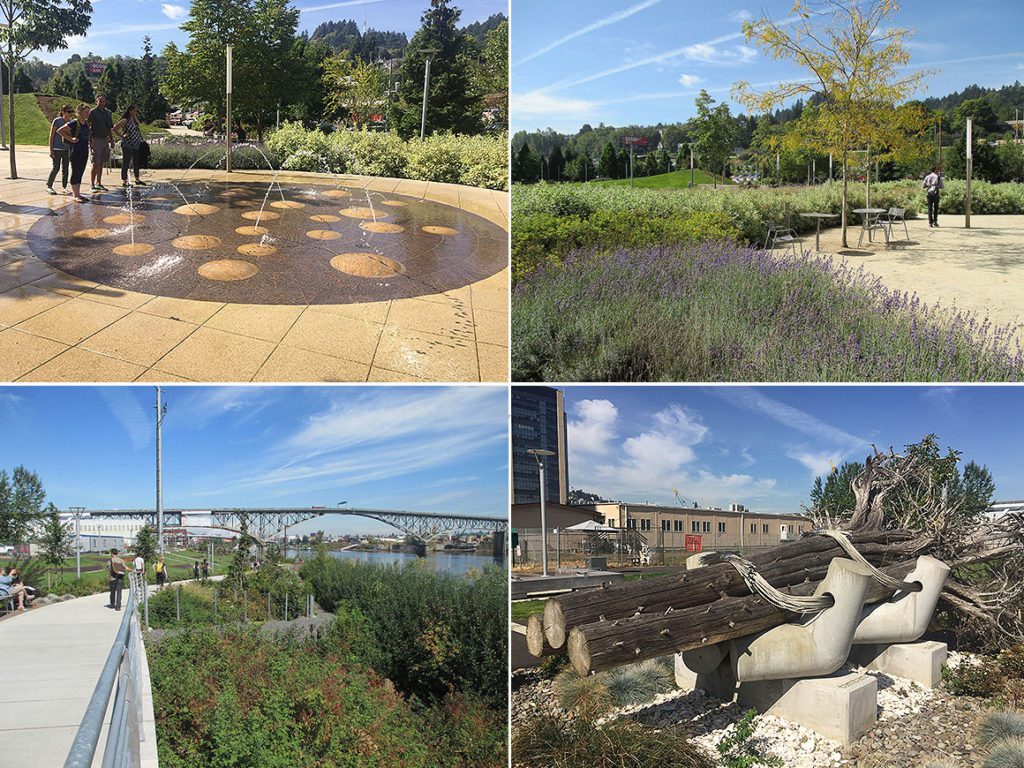
We ate lunch in Director Park at Elephants in the Park. Director Park, designed by OLIN, features a public plaza, fountain, and glass canopy, which shelters a large seating area. One of our associates formerly worked at OLIN and actually worked on the plaza design! The plaza was full of people enjoying the day.
After lunch, our first stop was Jamison Square, designed by PWP Landscape Architecture. Toddlers played in the square’s water feature, which functions as a “manmade tidal pool,” with the water depth increasing and decreasing in intervals. The square also has plugins for cellphones along the light poles. After charging our dying phone batteries, we decided it was a great spot for a group photo.
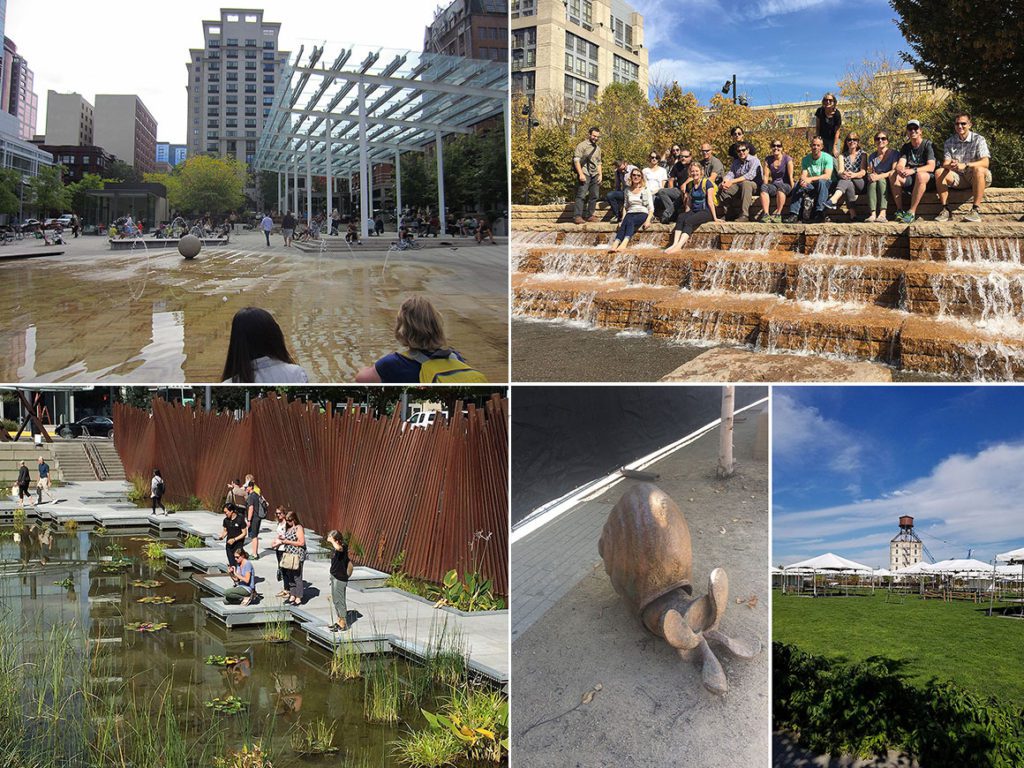
At nearby Tanner Springs Park, designed by Atelier Dreiseitl and GreenWorks PC, we admired the wall of vertical salvaged rail tracks and the beautiful pond that give this park its signature look. From the boardwalk, we paused to watch the fish and aquatic life. The park felt unusually warm, and we soon realized it was because of the sunlight reflected from a nearby building. Standing in the park, each of us had two shadows—the first caused by the sun, and the second caused by the sun’s reflection off the building!
We continued on to The Fields Park. Tents for Feast Portland filled the park’s large central field. The park featured snail sculptures, a children’s play area, dog park, and view out to the river and bridges. The park also views the remaining Centennial Mills buildings, a historical grain mill constructed in the early 1900s during Portland’s heyday as a working waterfront.
By now, the sunny day had become quite warm, so we retreated to the shaded courtyard of the Block 17 apartment complex. From there, we journeyed to the Deschutes Brewery for happy hour drinks and snacks.
